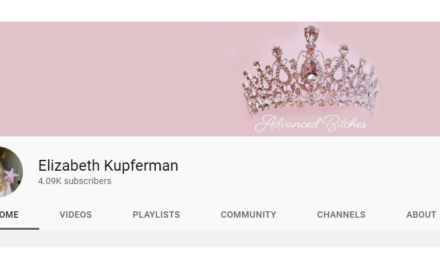Influencer marketing can seem like the wild west—a society without law and order filled cavalier personalities and epic standoffs between brand and influencer. The negative headlines surrounding influencer marketing, which range from fake followers and rogue content to damaging PR meltdowns, bolster this theory.
Don’t let bad press prevent your brand or agency from diving into space. The influencer industry is not going away anytime soon. In fact, it continues to be a highly effective tactic for industries of all sorts, boosting sentiment and even driving sales. Of course, this means of generating engagement and awareness can only be successful when managed correctly.
Influencer marketing disasters are a result of poorly chosen partnerships. Before you take a chance with an industry influencer, keep an eye out for these five red flags to avoid influencer fraud or potentially negative campaign results:
- An unusual spike in followers–These days, “influence” can easily be purchased and sold on the black market. An influencer’s total follower count is not enough to determine their true reach and impact. Influencers should demonstrate steady audience growth over time. Be wary of any unusual spikes in followers or a brand-new account with a huge follower base. These red flags warn that the account owner purchased its audience and therefore is not reaching real consumers.
- Abnormal engagement rates–Aggressive fluctuation in an influencer’s engagement rate could be a red flag for fraud. An influencer may have had a post go “viral,” but that’s an unusual occurrence as organic engagement across platforms trends down. Look deeper into engagement metrics than just the sum of likes and comments. Are the influencer’s top fans spam accounts or bots? This is a red flag that the influencer could be participating in “like pods” or manufacturing engagement by purchasing it from a third-party source. One way to spot an engagement fraud is to monitor the initial likes of a new post. Are the numbers too good to be true in the first minute? Odds are if you look to see who liked the photo, the “liker” isn’t even following the influencer.
- Too much sponsored content–Brands love influencers for their authentic storytelling with a “real” point of view. But what types of content and stories does the influencer actually publish? Investigate further into the influencer’s posts—not just in the last week but last month or even last year. Do you see a string of back-to-back sponsored posts? If so, this could be a red flag that the influencer does not vet their partnerships, and may post anything for top dollar. Instead, find influencers who vet their partnerships as carefully as you do. Building partnerships with influencers who deeply share your brand values will deliver stronger, more authentic messaging that reaches and impacts your target audience.
- Rogue or controversial views–Working with influencers comes with a degree of risk. Partnering with someone to tell a story about your business or brand in their own unique voice, can be a tricky recipe. When considering an influencer partnership, examine the influencer’s voice and stance on news, politics and other issues. Has this influencer appeared in any headlines for making controversial remarks? Have they gone rogue and said negative things about a sponsor? This is a red flag that the influencer is unpredictable and might not be the best partner for your brand.
- The absence of a media kit–The influencer industry today is just that – an industry. As with any growing field, the larger it becomes, the increasing disparity between the experts, novices, and hacks. Influencers should have materials to support their paid sponsorship request. A media kit outlining audience demographics, engagement rates, case studies, and client referrals demonstrates an influencer’s professionalism, experience, and track record of success. No media kit? No numbers? Big red flag.
The issue of fake influencers is nothing new, but marketers are finally talking about it out in the open and putting these potential brand representatives on notice. Declining organic reach and constantly evolving algorithm changes place influencers under the same pressure as brands to keep their numbers from plunging. However, resorting to follower purchases or engaging in comment pods may not be a solution for them much longer. Keep your brand safe and in the eyes of your proper audiences by watching out for these influencer red flags.






